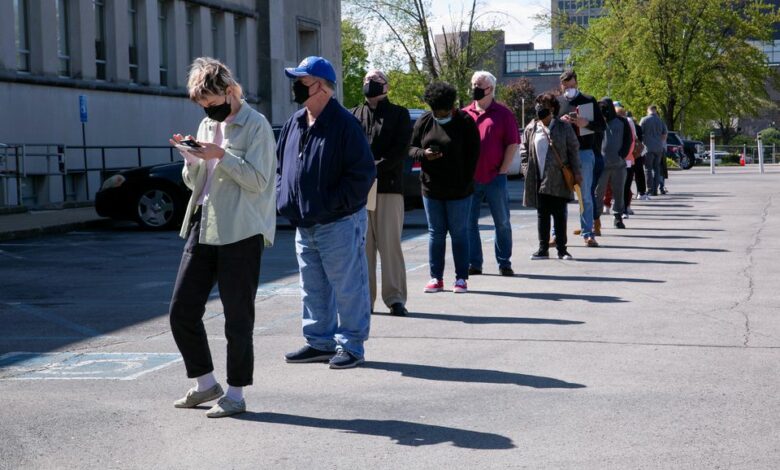
WASHINGTON, Dec 2 (Reuters) – The number of Americans filing new claims for unemployment benefits increased less than expected last week, pointing to tightening labor market conditions, while layoffs tumbled to a 28-1/2-year low in November.
Initial claims for state unemployment benefits rose 28,000 to a seasonally adjusted 222,000 for the week ended Nov. 27, the Labor Department said on Thursday. Claims, which dropped to 194,000 in the prior week, tend to be volatile around Thanksgiving, the start of the holiday season.
Economists polled by Reuters had forecast 240,000 applications for the latest week. Claims have declined from a record high of 6.149 million in early April 2020.
Last week’s data has no bearing on the department’s closely watched employment report for November, scheduled to be published on Friday, as it falls outside the period during which the government surveyed businesses and households for the nonfarm payrolls count and the unemployment rate. Claims declined between mid-October and mid-November.
According to a Reuters survey of economists, nonfarm payrolls probably increased by 550,000 jobs in November after rising 531,000 in October. The unemployment rate is forecast dipping to 4.5% from 4.6% in October.
Also arguing for continued improvement in the labor market, the ADP National Employment report on Wednesday showed private payrolls increased by 534,000 jobs last month. A measure of manufacturing employment rose to a seven-month high, a survey from the Institute for Supply Management showed.
The Conference Board’s labor market differential – derived from data on consumers’ views on whether jobs are plentiful or hard to get – jumped to a record high in November.
The run of good news on the labor market was extended by a separate report on Thursday from global outplacement firm Challenger, Gray & Christmas showing job cuts announced by U.S.-based employers dropped 34.8% in November to 14,875, the fewest since May 1993. So far this year, there have been 302,918 job cuts, down 86% compared to the same period in 2020.
But worker shortages are hindering faster job growth. The Federal Reserve’s Beige Book on Wednesday described employment growth ranging from “modest to strong” across Fed districts during October and early November, with contacts noting “persistent difficulty in hiring and retaining employees.”
There were 10.4 million job openings as of the end of September. The workforce is down 3 million people from its pre-pandemic level, even as generous federal government-funded benefits have expired, schools have reopened for in-person learning and companies are raising wages.




